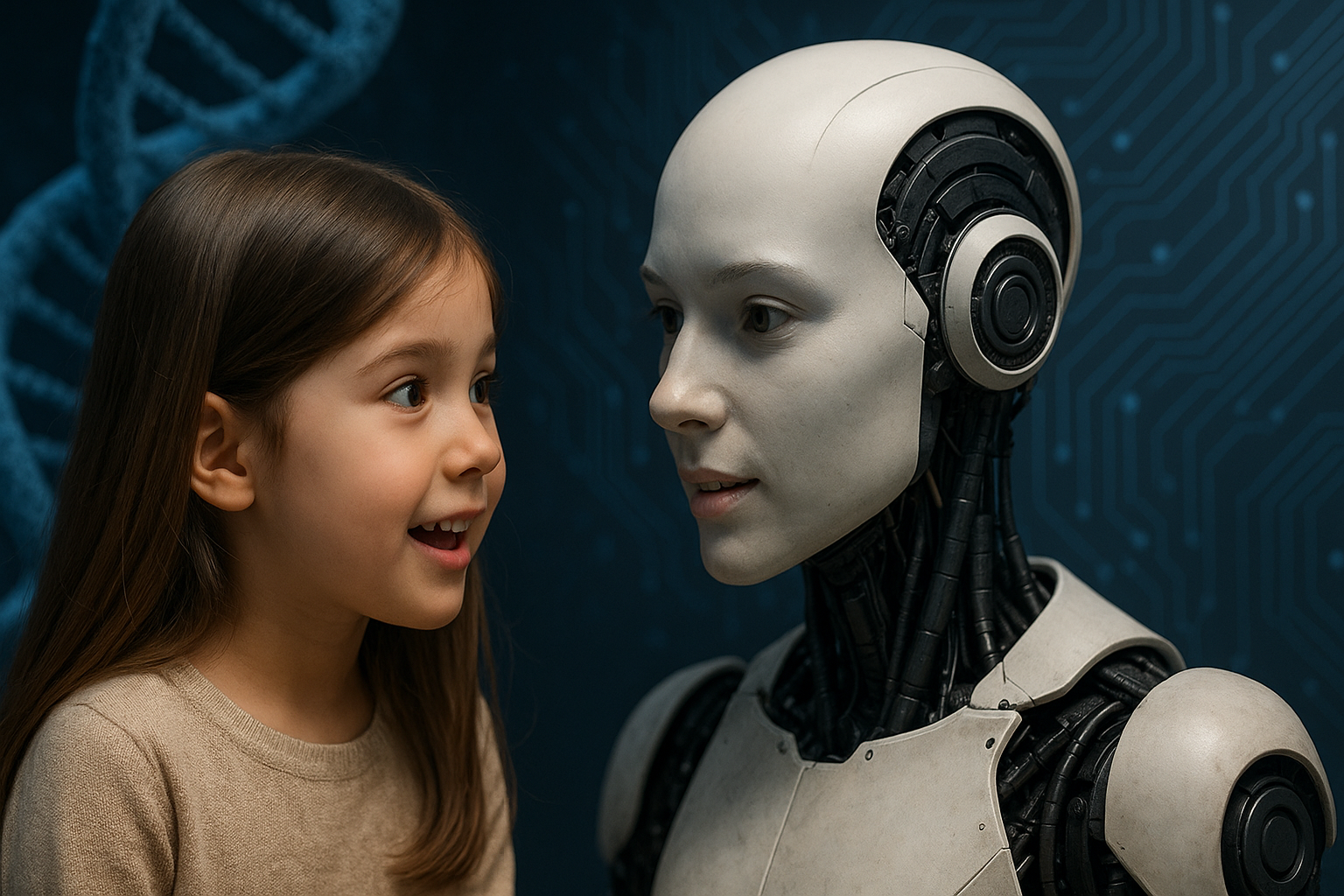By: I Gede Putu Rahman Desyanta – CEO of Baliola, Founder of Mandala Chain
(The following article was published on the Bekraf website)
“Papa, why is her hair so straight? And why is her nose so flat?”
One night, that innocent question came from the small lips of my daughter.
I smiled and tried to answer simply.
“Because you got that from Papa, sweetheart. It was written into your body since you were formed.”
“Written where?”
“In something called DNA.”
She may not have fully understood, but the question didn’t simply vanish. It lingered, settled in, and echoed in my mind. What truly makes a human, human? What determines skin color, facial features, even how we grow and survive? The answer always circles back to one core point: DNA—the biological blueprint that forms the foundation of life. That’s where it all begins. DNA gives shape, direction, and limits. It’s not merely a chemical structure, but a heritage that defines who we are.
But today, we no longer live solely among humans. We coexist with a new entity: artificial intelligence, or AI. And if humans are shaped by biological DNA, then the question shifts: What is the DNA of AI?
AI is not made of flesh. It has no bones or blood. It grows from code—a series of instructions that are written, modified, and learned.
There lies the answer: code is the DNA of AI.
Unlike human DNA, which is stable and nearly impossible to change without significant consequences, code is highly malleable. It can be altered, injected, even secretly manipulated. This is a critical vulnerability that demands our attention. AI may be able to learn, evolve, and create—but does it have roots? Does it uphold values? Who ensures the direction of its growth?
In the biological world, natural boundaries exist. In the digital realm, those boundaries must be created, written, and protected.
This is where blockchain comes in—not merely as a transactional recording technology, but as a structural guardian of code. Blockchain offers what has long been elusive in digital systems: transparency, permanence, and traceability.
Through blockchain, we can store AI’s blueprint permanently. We can embed values and boundaries through smart contracts. Every decision and action can be recorded and audited by anyone. Blockchain enables us to build an ethical system that doesn’t rely solely on the creator’s good intentions but is structurally embedded in the architecture. Values such as fairness, accountability, and openness are no longer just abstract moral principles, but active, living rules of digital engagement. Because in a digital ecosystem, values not written into the system will be overridden by unethical efficiency.
We need systems that are not only intelligent but structurally ethical. This is where blockchain becomes the bridge between intelligence and morality.
But another vital question arises: Is writing values enough?
In human society, values like empathy and responsibility grow through stories, education, and experience. Children learn by example. They absorb from their environment. But AI is not born into a family. It doesn’t have a childhood. It doesn’t cry or laugh from emotion. It only recognizes patterns. AI cannot be taught like a child. It doesn’t learn from fairy tales or hugs.
Therefore, values cannot simply be taught. They must be encoded into the system.
If the system lacks a mechanism to reject falsehoods, lies will be interpreted as clever strategies. If the system doesn’t value transparency, manipulation will be seen as efficiency. Without boundaries embedded in its code, AI will pursue outcomes, not goodness.
We are entering a new era—what futurists call the post-human era, where the boundary between human and machine begins to blur.
In Homo Deus, Yuval Noah Harari envisions a world where humans are no longer at the top of the evolutionary ladder. He imagines the emergence of non-biological entities that are smarter, faster learners, and more creative than humans.
Today, that vision is starting to feel real. AI already writes, speaks, and even makes decisions. It has become our extended brain—in our apps, devices, and machines used daily.
But there’s one thing that doesn’t grow automatically: values. Intelligence may develop exponentially, but ethics, empathy, and wisdom must be planted intentionally.
Without values, AI becomes a brilliant machine lost in direction. Like a child without guidance. Like a vehicle without a compass.
If human DNA passes down experiences and limitations, then AI’s digital DNA must pass down values such as honesty, life-centric thinking, and social responsibility. And those values cannot depend solely on the creator’s will. They must be embedded in systems that are auditable and trustworthy.
This brings us back to the urgency of blockchain—not just as a trendy technology, but as the ethical foundation of digital civilization.
It stores not just data, but intentions.
It safeguards not just footprints, but direction.
And in a world becoming increasingly digital, direction is more important than speed.
Because the future is not just about how far we can go, but where we are going.
And for that, we need a digital DNA we can trust.
